Directions (1-5): Study the passage given below and answer the following questions.
There are 5 persons – A, B, C, D & E. E is 200% more efficient than A and A’s efficiency is 40% of B’s efficiency. A alone can complete a piece of work in 45 days and D alone can do same piece of work in 30 days. C is 50% more efficient than D. Total work is 900 units.
Q1. Find in how many days 90% of that work will be completed by A & B (B working with 80% of his usual efficiency) working together?
(a) 25.5 days
(b) 21.5 days
(c) 18.5 days
(d) 13.5 days
(e) 20.5 days
Q2. Find difference between units of work done by C alone & E alone in 12 days, if C is working with 60% of its usual efficiency and E is working with 65% of its usual efficiency.
(a) 114 units
(b) 144 units
(c) 194 units
(d) 164 units
(e) 134 units

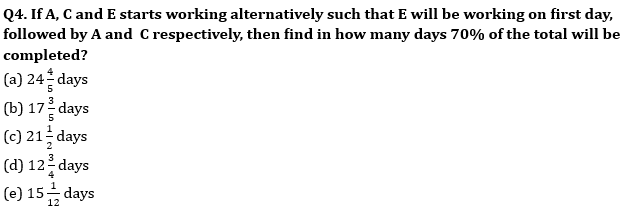
Q5. Work completed by D alone in 14 days is what percent of the work completed by B alone in 8 days?
(a) 130%
(b) 105%
(c) 160%
(d) 155%
(e) 185%
Directions (6-10): The following line graph shows the number of broadband users (in thousands) of three different suppliers in five different years. Read the data carefully and answer the following questions.
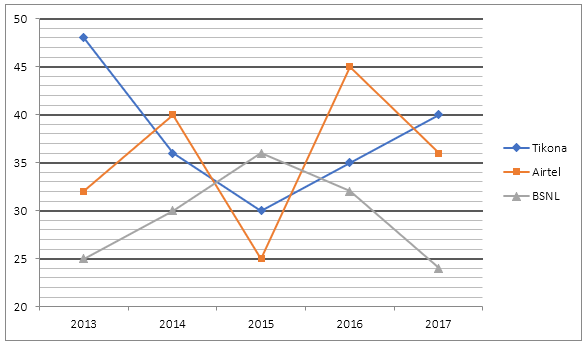
Q6. The total number of Tikona and BSNL broadband users in 2014 and 2015 together is how much more or less than the total number of Airtel broadband users from 2014 to 2017.
(a) 12,800
(b) 13,000
(c) 14,000
(d) 14,800
(e) 15,000
Q7. Out of total broadband users in 2013, ratio of male to female users is 13 : 8 while in 2016, the ratio of male to female is 9 : 5. Then, find the total number of female users in these two years is approximately what percent of the total number of male users in these two years ?
(a) 60%
(b) 50%
(c) 70%
(d) 40%
(e) 80%
Q8. Number of Den broadband users in 2015 is 30% of the total users of these three broadband in 2014. And, the number of users of Den increases by 10% every year then total number of Den users in 2017 is how much more/less than total number of Airtel users in 2017.
(a) 2168
(b) 2388
(c) 2428
(d) 2478
(e) 2558
Q9. Find the ratio of total number of Airtel users from 2014 to 2016 to the total number of Tikona users from 2015 to 2017?
(a) 10 : 9
(b) 22 : 21
(c) 11 : 10
(d) 42 : 41
(e) 4 : 3
Q10. Find the difference of the total number of users in 2013 and 2014 together and the total number of users in 2016 and 2017 together?
(a) 800
(b) 1200
(c) 1500
(d) 900
(e) 1000
Directions (11-15): Study the charts given below carefully and answer the following questions.
Pie chart shows the percentage distribution of total fans manufactured by 5 different fan manufacturers (A, B, C, D & E) and table shows the defective fans manufactured by these 5 companies.
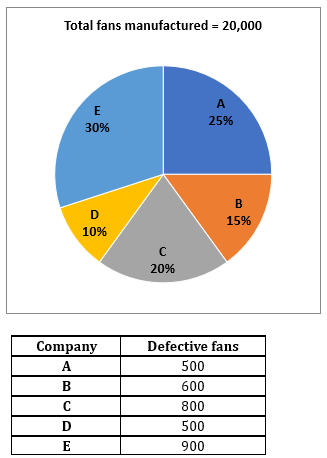
Note – Total fans manufactured by any company = Total (defective + non-defective) fans manufactured by that company.
Q11. Non – defective fans manufactured by A are what percent more or less than total fans manufactured by C?
(a) 24.5%
(b) 12.5%
(c) 19.5%
(d) 27.5%
(e) 32.5%
Q12. Non – defective fans manufactured by E are how much more than defective fans manufactured by A, B & C together?
(a) 3600
(b) 2800
(c) 2500
(d) 3700
(e) 3200
Q13. If cost of manufacturing a fan for D is Rs.100 and D wants to earn 20% profit on the total cost of manufacturing and D does not sell defective fans, then find at what price D should sell all the non-defective fans.
(a) Rs.160
(b) Rs.156
(c) Rs.145
(d) Rs.148
(e) Rs.154
Q14. Find the central angle (in degrees) of total fans manufactured by A & C together.
(a) 144
(b) 150
(c) 180
(d) 162
(e) 200
Q15. If E also manufactures coolers and ratio of fans to coolers manufactured by E is 5 : 7, then find coolers manufactured by E are how much more than non-defective fans manufactured by C?
(a) 5200
(b) 4600
(c) 4800
(d) 5400
(e) 5000
Solutions
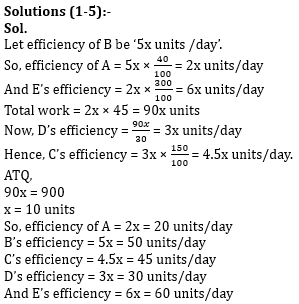
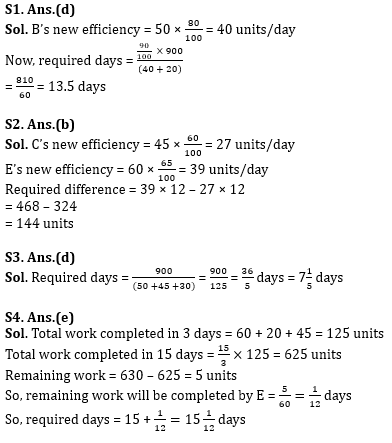
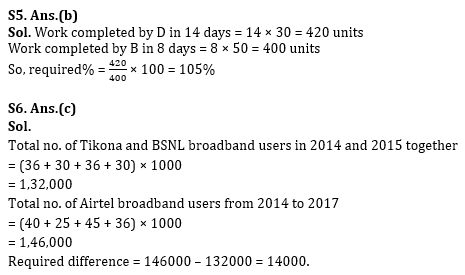
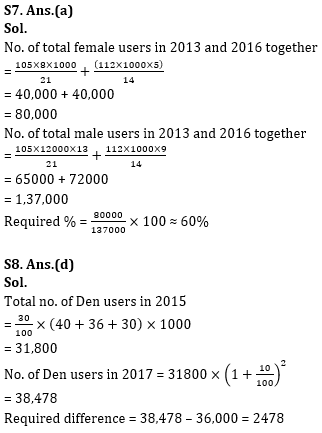
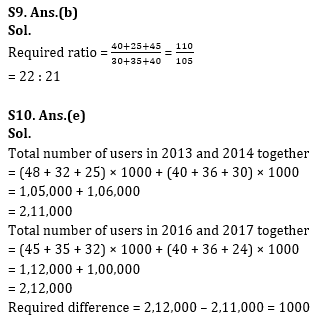
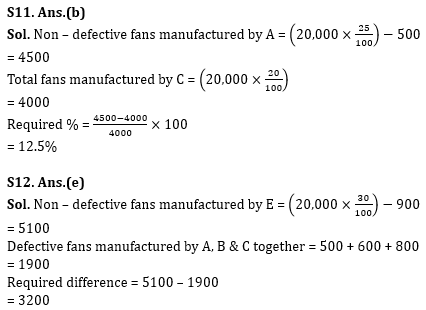
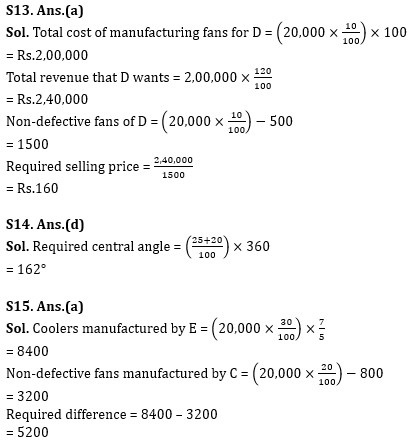





 Quantitative Aptitude Quiz For Bank Main...
Quantitative Aptitude Quiz For Bank Main...
 Quantitative Aptitude Quiz For Bank Foun...
Quantitative Aptitude Quiz For Bank Foun...







